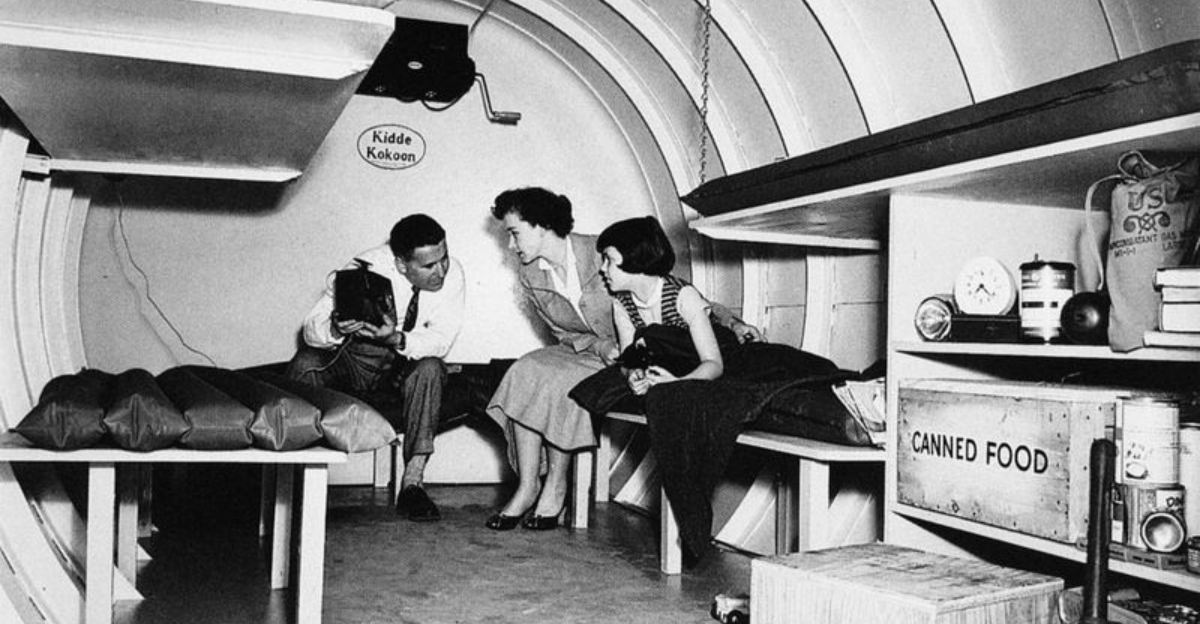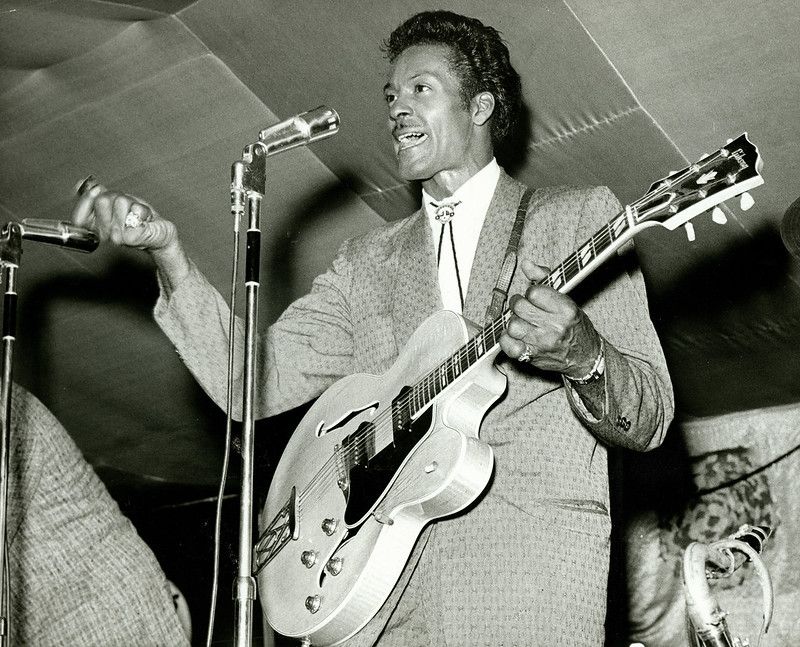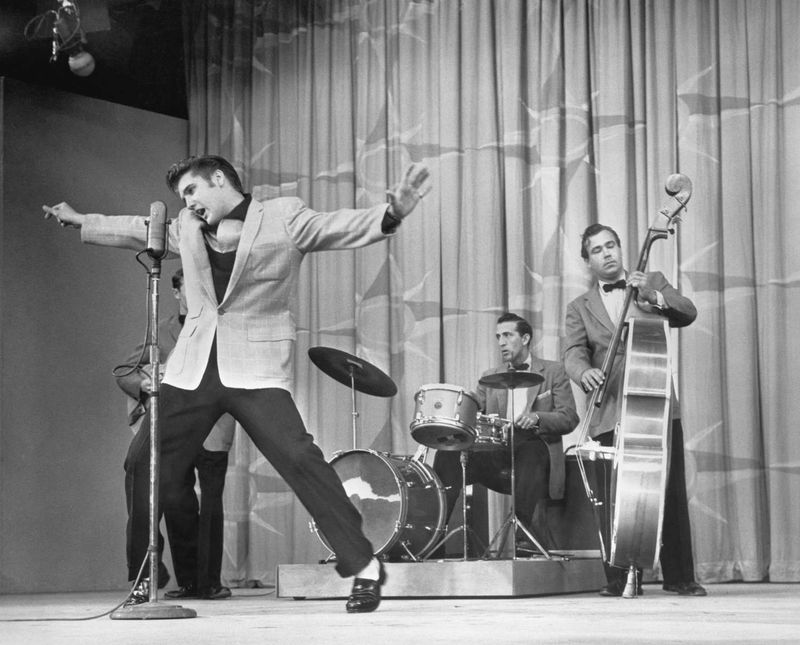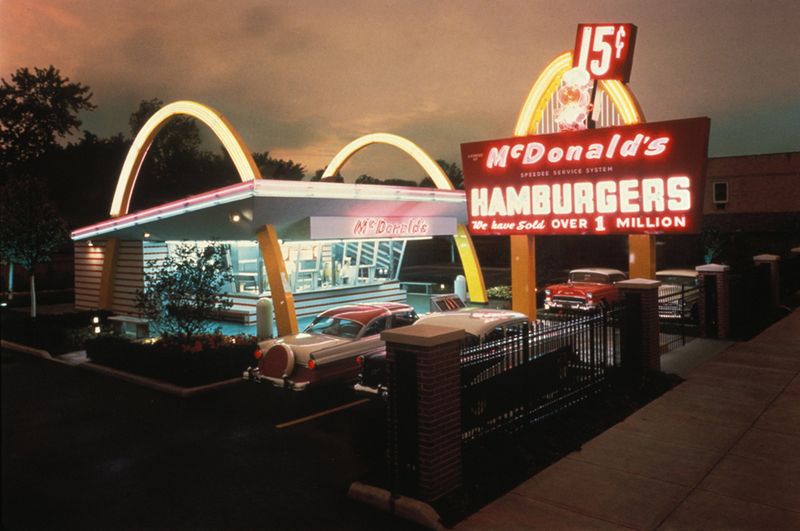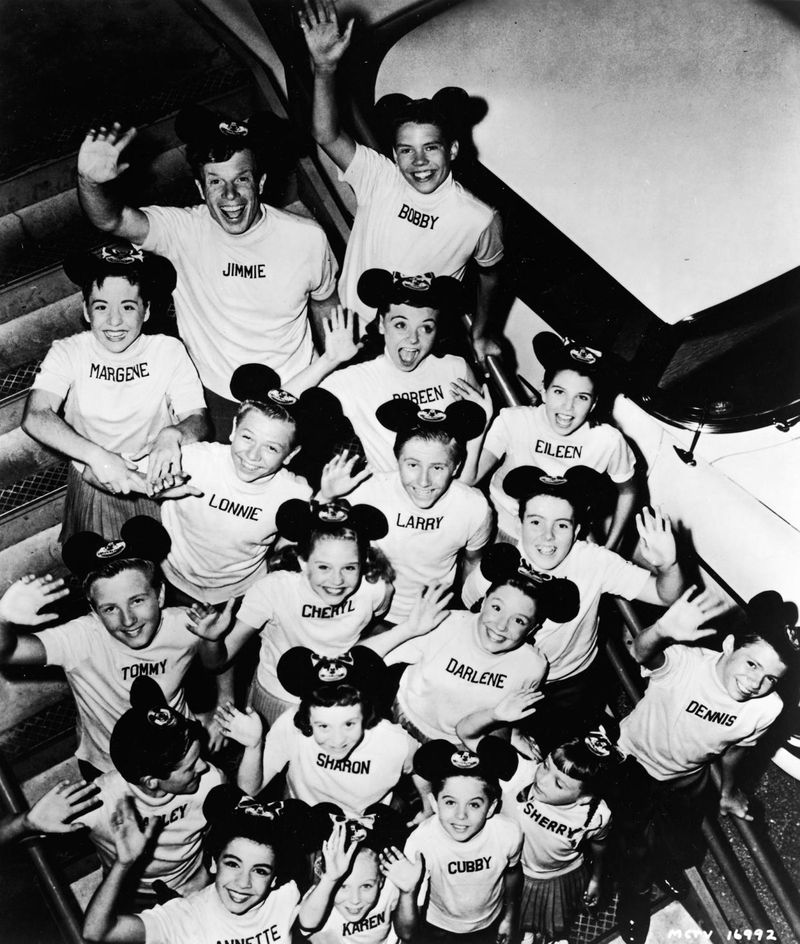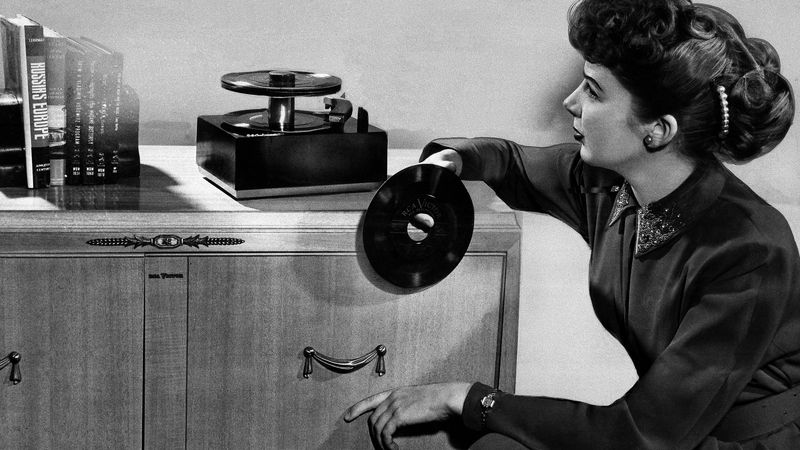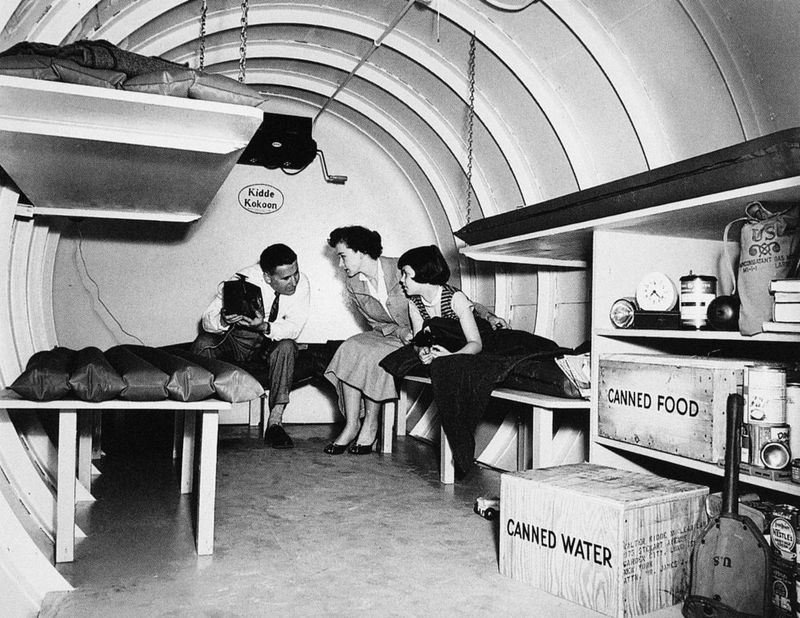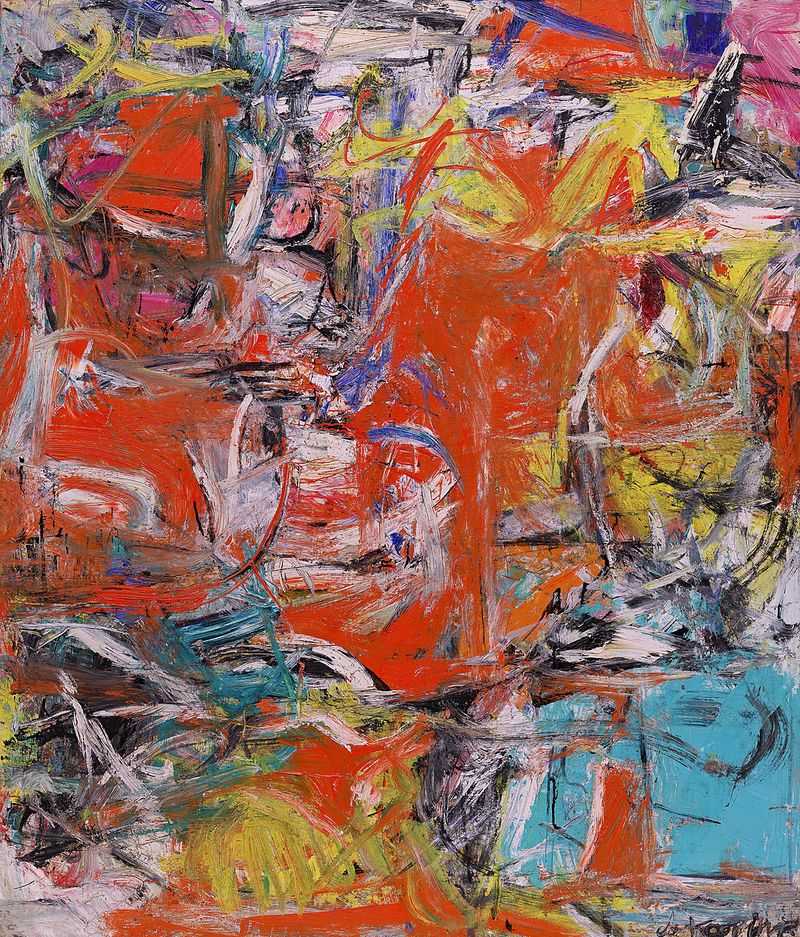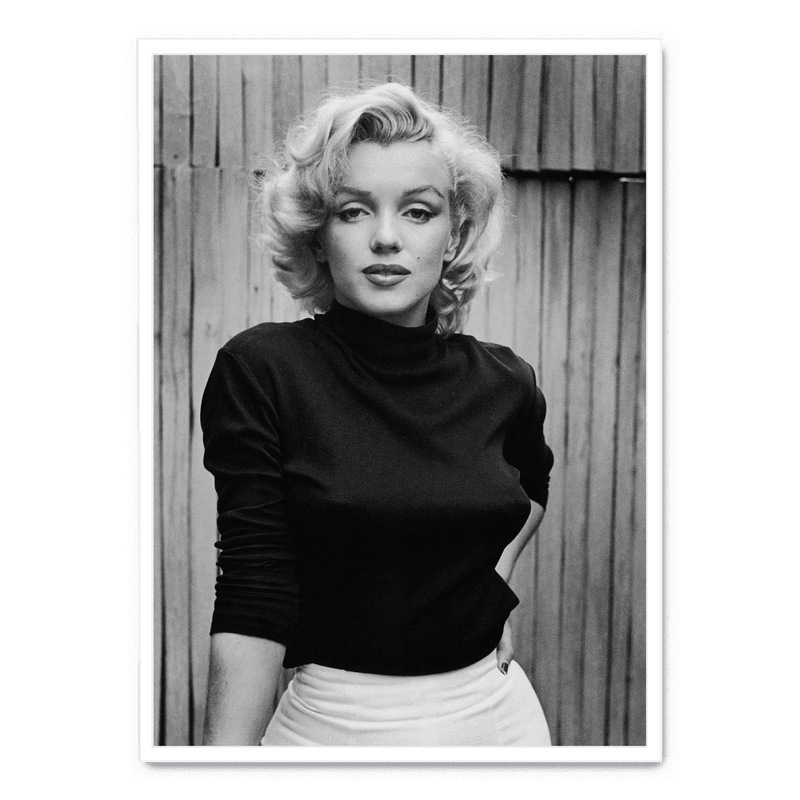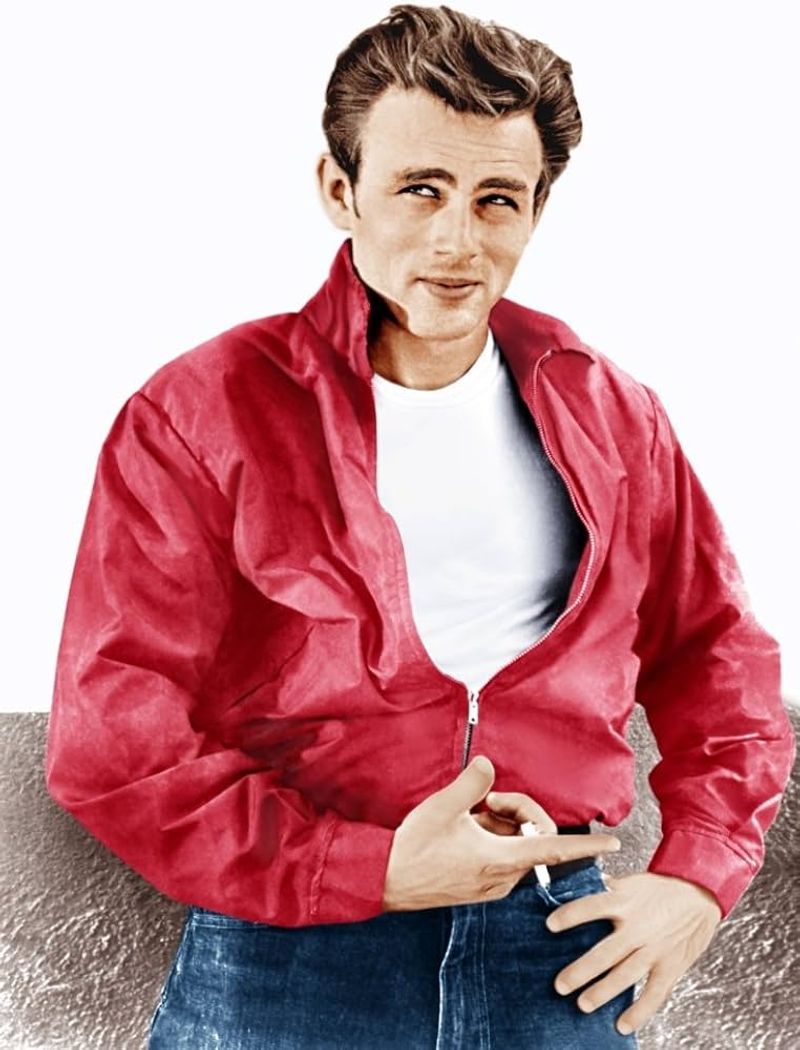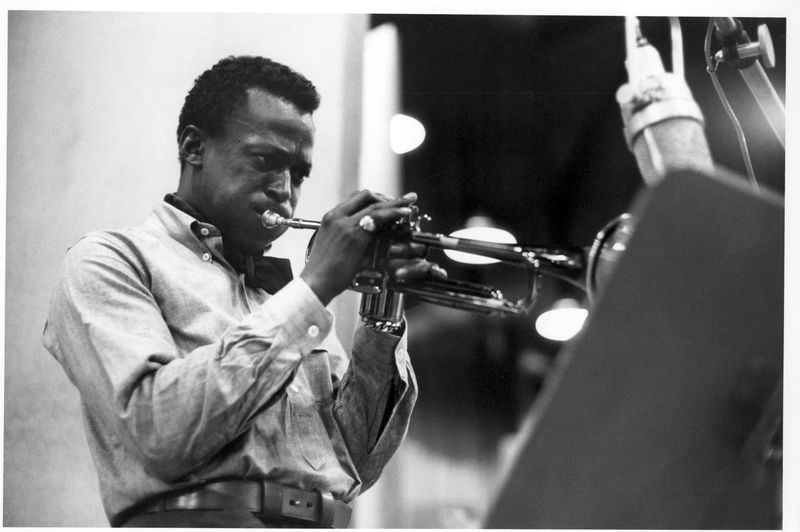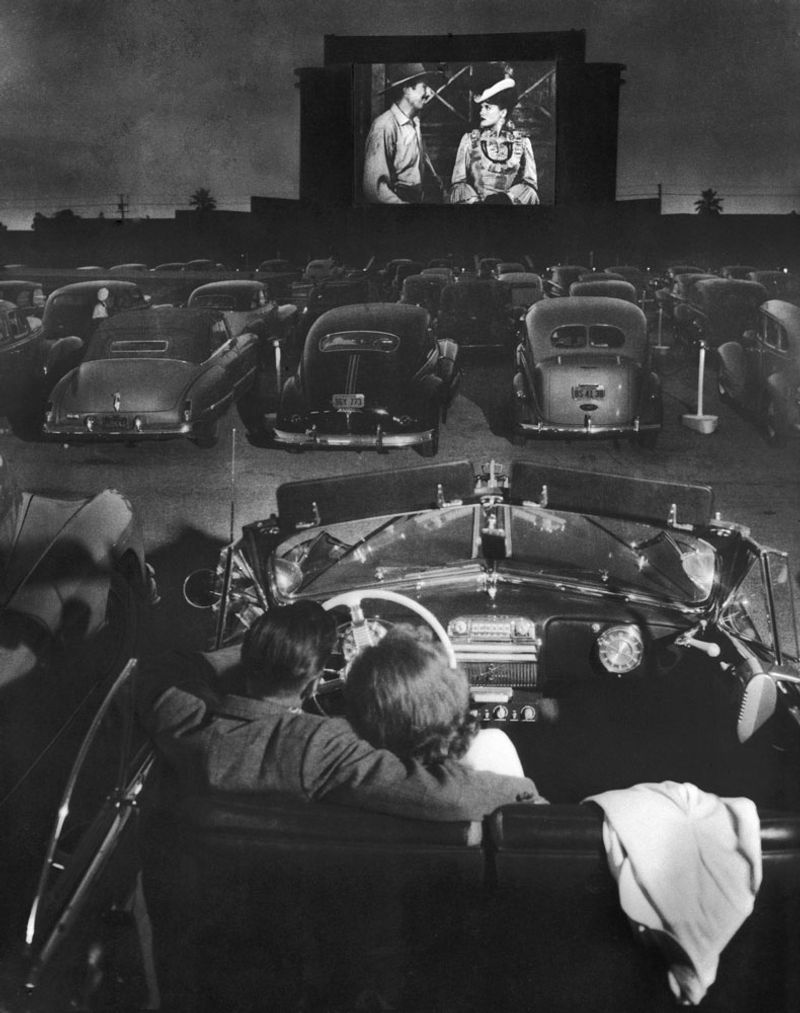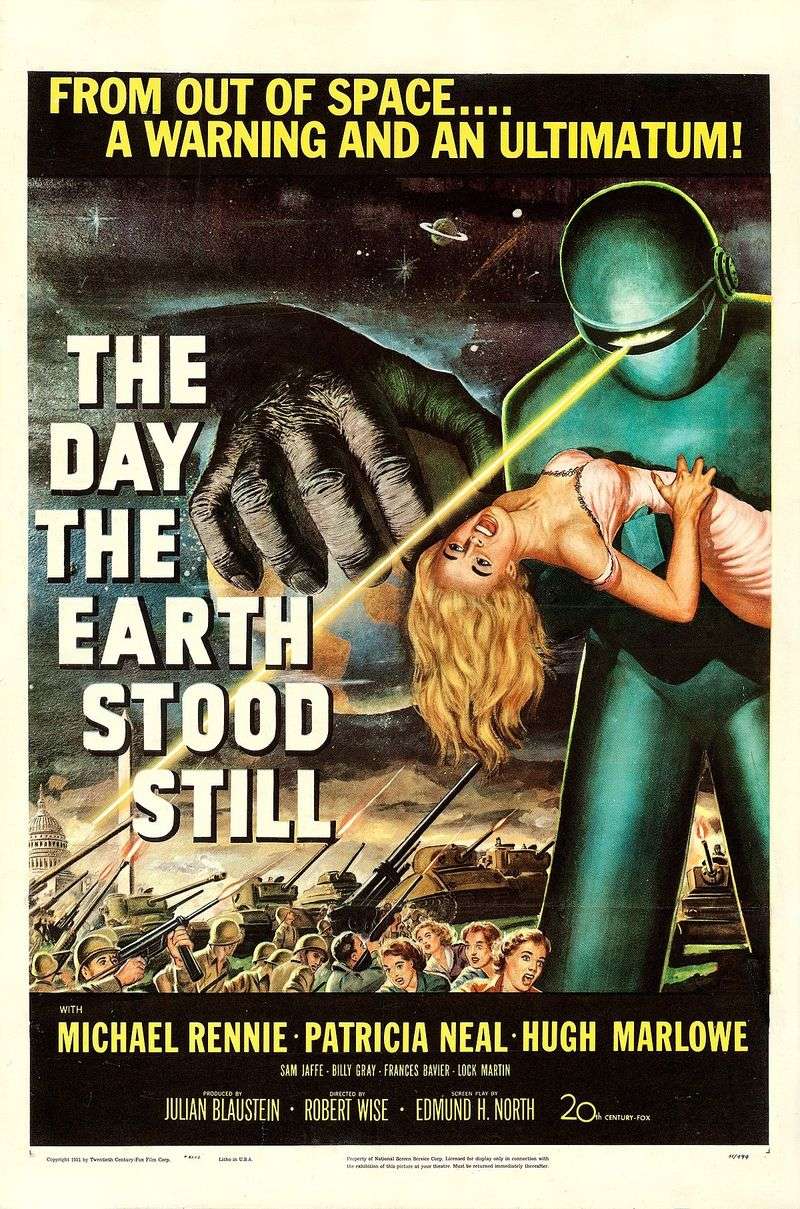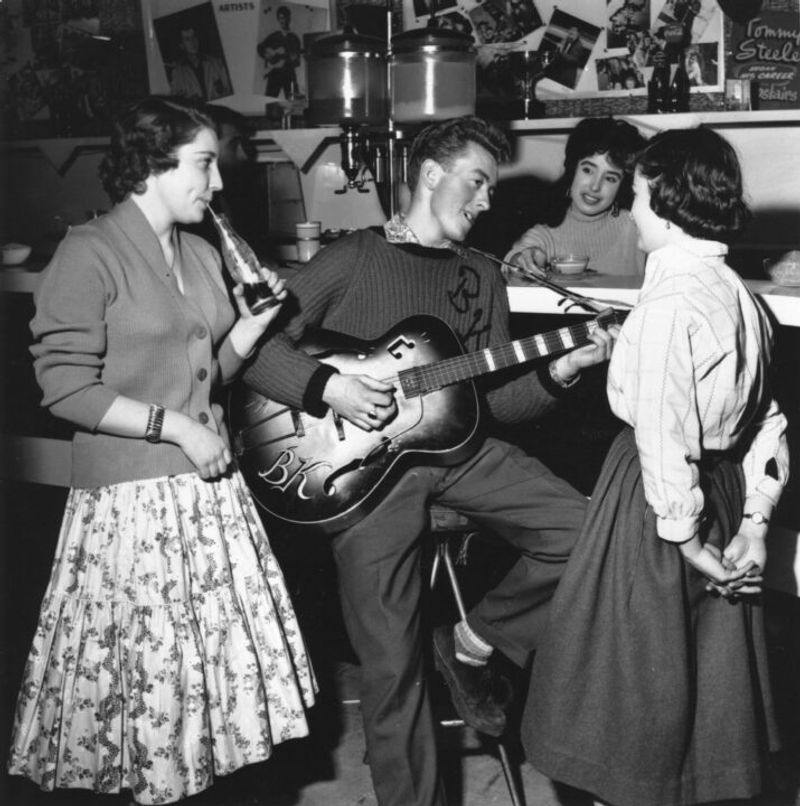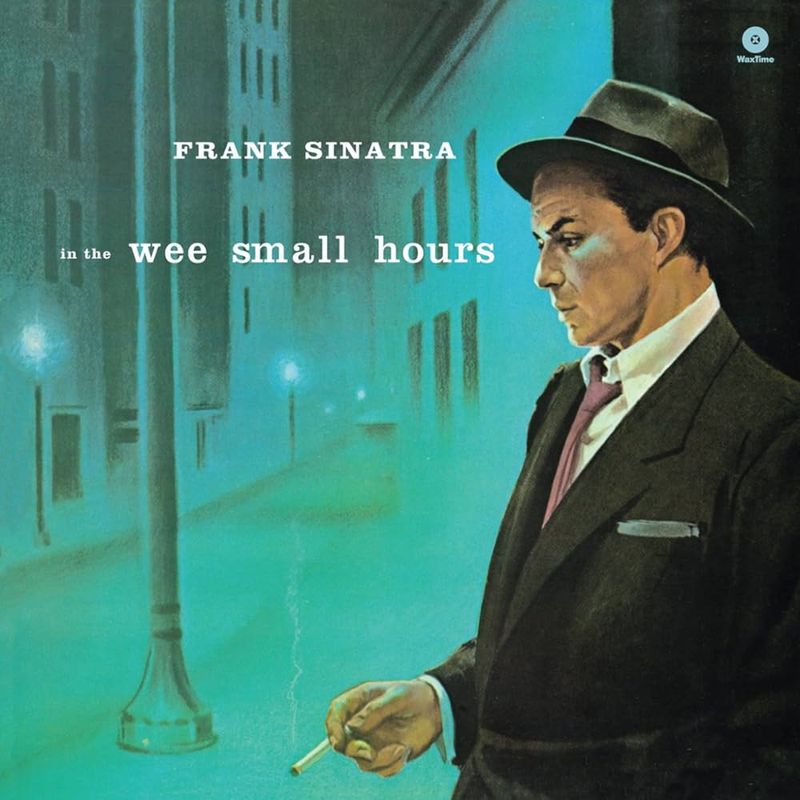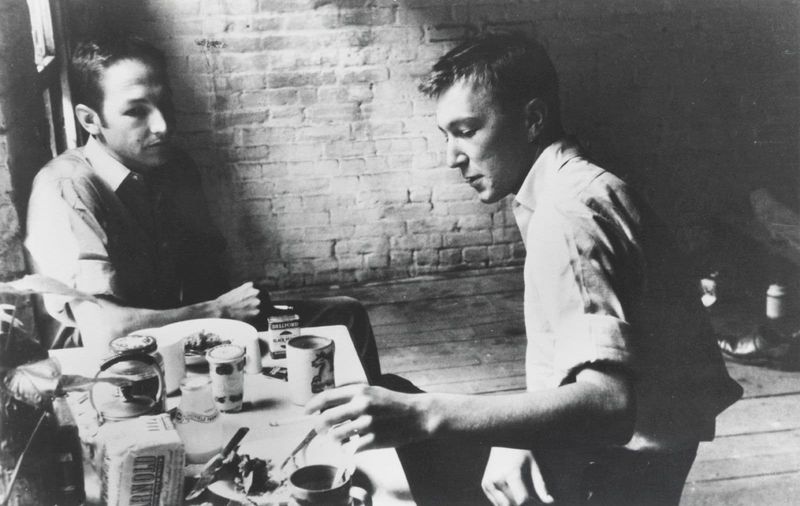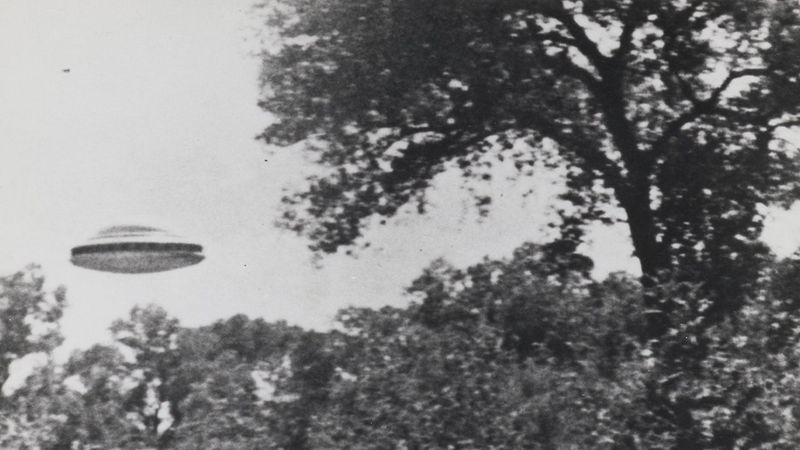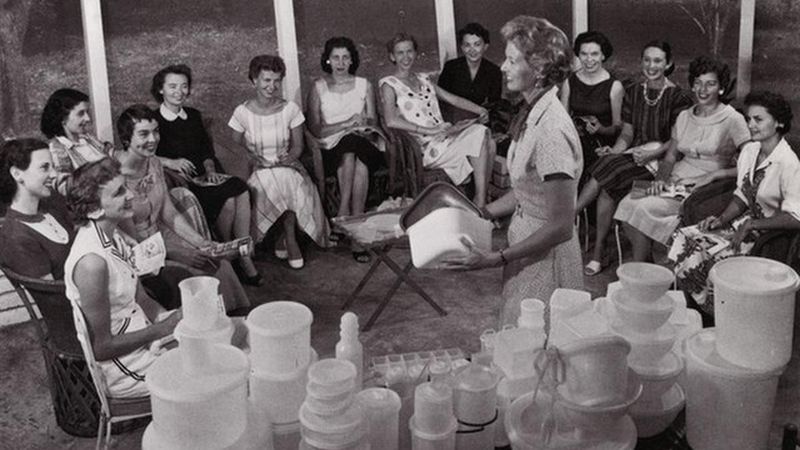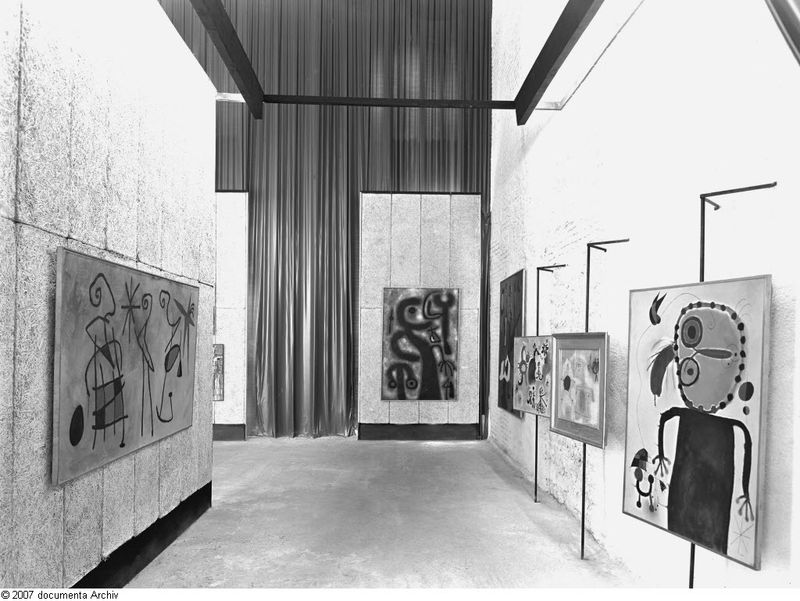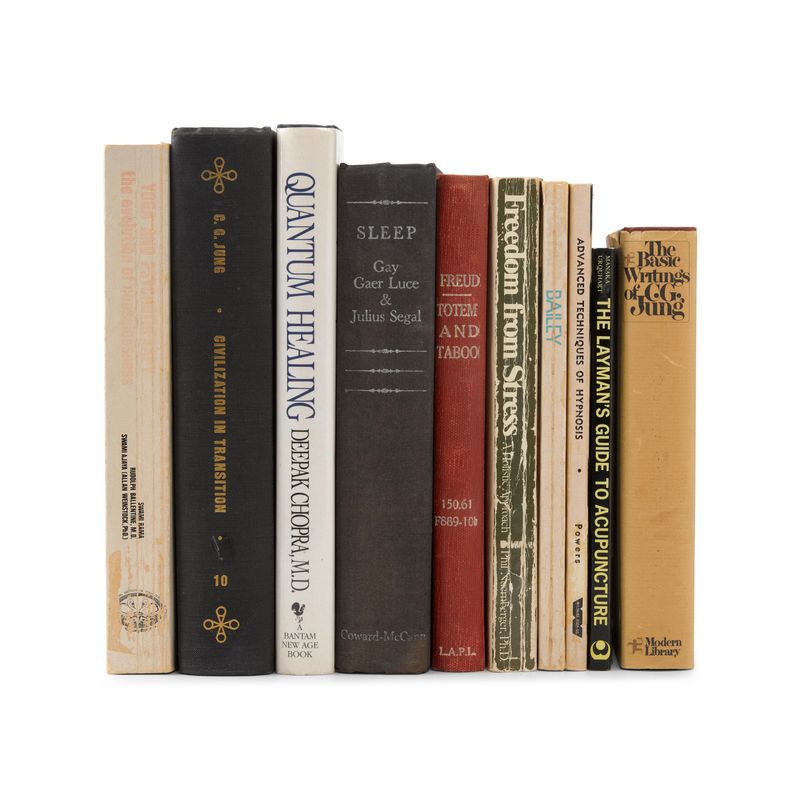The year 1955 was a vibrant tapestry woven with groundbreaking events and cultural phenomena.
From the birth of rock ‘n’ roll to mysterious UFO sightings, this year was packed with unforgettable moments.
Come along on this nostalgic journey as we explore the 20 wild happenings that defined 1955!
1. Rock ‘n’ Roll Was Born
In 1955, Chuck Berry released “Maybellene,” a song that fused blues and country into something brand new: rock ‘n’ roll. With his electric guitar riffs and dynamic stage presence, Berry captivated audiences and laid the foundation for a musical revolution. His energy was infectious, and young people found a new voice in his music. This was the year the world first heard the sounds that would define a generation. The beat of rock ‘n’ roll was here to stay, and its echoes can still be heard today. Chuck Berry’s influence is immeasurable, inspiring countless artists to come.
2. Elvis Presley Took the Stage
Elvis Presley, known as the King of Rock ‘n’ Roll, was still a truck driver in 1955, yet his musical journey was just beginning. By the end of the year, he had signed with RCA, marking the start of an iconic career. Elvis’s charisma and unique style captured the hearts of fans across the country. His performances were electrifying, and his voice was mesmerizing. From humble beginnings, he would go on to become a cultural icon, forever changing the music landscape. This year marked the dawn of a new era, with Elvis at the forefront.
3. McDonald’s Became a Franchise
1955 was a landmark year for fast food as Ray Kroc opened the first franchised McDonald’s in Des Plaines, IL. This move revolutionized the industry, turning a small burger joint into a global phenomenon. Families flocked to enjoy the speedy service and delicious meals. The golden arches became a symbol of convenience and modernity. McDonald’s offered something new and exciting, setting the stage for a fast-food empire. The brand’s expansion and success transformed eating habits, and today, it’s a name recognized worldwide. Kroc’s vision set the wheels in motion for a culinary revolution.
4. The Mickey Mouse Club Premiered
The Mickey Mouse Club made its television debut in 1955, enchanting a generation of children. With catchy songs, engaging segments, and, of course, the beloved Mickey Mouse, this show became a household favorite. Kids eagerly gathered around their TV sets to join the fun and laughter. It was more than a show; it was a cultural phenomenon that shaped childhoods across America. The cheerful Mouseketeers and their antics brought joy and excitement into homes, and its legacy continues to influence children’s programming. The Mickey Mouse Club’s premiere was a defining moment in entertainment history.
5. 45 RPM Singles Took Over
In 1955, the 45 RPM single became the preferred format for music lovers, especially teenagers. Record players and jukeboxes filled with these small, convenient discs, revolutionizing how people consumed music. Teens flocked to stores to buy the latest hits, eager to play them at home or at parties. The accessibility and affordability of these records fueled the music boom, making it easier for new artists to reach audiences. This was the beginning of a new era in music distribution, allowing fans to connect with their favorite tunes like never before. The 45 RPM single remains iconic.
6. Cold War Paranoia Met Domestic Bliss
In 1955, the Cold War loomed large, and paranoia seeped into everyday life. Glossy magazines juxtaposed images of fallout shelters with modern kitchen appliances, reflecting the era’s tension and domestic aspirations. Families were encouraged to prepare for potential nuclear threats, yet they also embraced the comforts of suburban living. It was a time of contrast, where fear and hope coexisted. People sought security in their homes while grappling with the uncertainties of the world. This dual reality defined the era, shaping the attitudes and dreams of the 1950s. The tension was palpable, yet life went on.
7. Abstract Expressionism Ruled NYC
The art world in 1955 was alive with innovation, as Abstract Expressionism took center stage in New York City. Artists like Jackson Pollock, Willem de Kooning, and Mark Rothko pushed boundaries, creating works that were thrilling and, at times, incomprehensible. Their art was bold, emotional, and unlike anything seen before. Galleries buzzed with excitement as patrons marveled at the energy and creativity on display. New York became the epicenter of modern art, a place where daring ideas flourished. This movement reshaped the art landscape, influencing generations of artists to think outside the box.
8. Marilyn Monroe and Pop Culture Obsession
In 1955, Marilyn Monroe dazzled the world with her unforgettable performance in “The Seven Year Itch.” Her iconic white dress moment became a symbol of allure and charm, solidifying her status as a pop culture phenomenon. With her captivating beauty and on-screen presence, Marilyn became an emblem of glamour and fascination. Audiences were entranced by her, and her influence extended beyond film, permeating fashion and society. Her role in the movie was more than entertainment; it was a cultural touchstone that marked a turning point in Hollywood. Marilyn Monroe’s legacy continues to mesmerize and inspire.
9. James Dean Became a Legend
1955 saw the rise of James Dean as a cinematic legend. Following his untimely death, the release of “Rebel Without a Cause” catapulted him into mythic status. Dean’s portrayal of a troubled teenager resonated with audiences, capturing the angst and rebellion of a generation. His cool demeanor and intense performances left an indelible mark on film history. He became an icon of youthful defiance, embodying the spirit of the 1950s. Though his career was brief, his impact was profound, and his legacy endures as a symbol of passion and authenticity. James Dean’s star continues to shine brightly.
10. Jazz Went Modern
In 1955, jazz was undergoing a transformation as artists like Miles Davis and Thelonious Monk pushed the boundaries of the genre. Davis was assembling his First Great Quintet, a group that would redefine modern jazz with their innovative sound. Monk, known for his distinctive style, was covering Ellington with swagger, adding a fresh twist to classic tunes. Jazz clubs buzzed with excitement as audiences experienced this new wave of creativity. The music was daring, expressive, and utterly captivating. Modern jazz was more than a sound; it was a movement that inspired musicians and listeners alike.
11. Drive-In Culture Boomed
The drive-in culture of 1955 was a true reflection of American life on wheels. Drive-in theaters and diners became popular hangouts, offering a unique blend of entertainment and socializing. Families and friends gathered in classic cars to enjoy movies under the stars, creating cherished memories. Milkshakes, burgers, and laughter filled the air as the drive-in experience became a beloved pastime. It was a time of freedom and fun, where the automobile symbolized adventure and exploration. The drive-in phenomenon of 1955 shaped how people connected and enjoyed leisure time, leaving a lasting imprint on American culture.
12. Sci-Fi Ruled the Silver Screen
1955 was a year when science fiction captivated audiences, reflecting the era’s dreams and fears. Movies featuring aliens, monsters, and atomic mutations explored themes of Cold War paranoia and technological wonder. Cinemagoers were both thrilled and unnerved by these imaginative tales, which often mirrored real-world anxieties. The special effects and storytelling pushed the boundaries of film, sparking curiosity and excitement. Sci-fi became a vehicle for exploring existential questions and futuristic possibilities. The genre’s popularity soared, influencing not only cinema but also literature and pop culture. The fascination with the unknown was palpable, with sci-fi leading the charge.
13. The Teenager Was Invented (Culturally Speaking)
The concept of the teenager as a distinct cultural identity emerged in 1955. For the first time, teens were recognized as a unique market with their own style, music, and interests. Soda shops and dance halls became popular hangouts, where teens gathered to socialize and express themselves. Fashion and music catered specifically to this age group, reflecting their tastes and aspirations. The notion of the teenager transformed society, influencing consumer behavior and cultural norms. This was a pivotal moment that shaped future generations, marking the dawn of youth culture. The teenager was here to stay, vibrant and full of potential.
14. Sinatra Got Sad (and Brilliant)
In 1955, Frank Sinatra delivered a masterpiece with the release of “In the Wee Small Hours,” an album that showcased his emotional depth and artistic brilliance. Sinatra’s soulful voice crooned about loneliness and heartache, resonating with listeners worldwide. The album’s concept was groundbreaking, creating a seamless narrative that drew audiences into its melancholic world. Sinatra’s vulnerability was palpable, and his ability to convey emotion made this work a classic. It was a turning point in his career, solidifying his status as a musical legend. The album continues to touch hearts, a testament to Sinatra’s unparalleled artistry.
15. Rauschenberg & Johns Start Changing Art Forever
In 1955, artists Robert Rauschenberg and Jasper Johns began to revolutionize the art world with their unconventional ideas. Their works challenged traditional boundaries, combining materials and techniques in unexpected ways. Rauschenberg’s “combines” and Johns’ use of everyday symbols opened new avenues for artistic expression. Their creativity and innovation were infectious, inspiring others to explore and experiment. This was the start of a new artistic era, where imagination knew no limits. The impact of Rauschenberg and Johns is still felt today, as their legacy continues to influence contemporary art and inspire fresh perspectives.
16. UFO Sightings Went Mainstream
1955 was a year when UFO sightings captured the public’s imagination, and stories of mysterious lights in the sky became mainstream. The Space Age was just around the corner, and fascination with the unknown was growing. Newspapers reported on these sightings, sparking curiosity and debate. People gazed skyward, wondering if we were not alone in the universe. UFOs became a cultural phenomenon, inspiring films, books, and endless speculation. This was a time of wonder and possibility, where the limits of human understanding were being tested. The mystery of UFOs continues to intrigue, a legacy of curiosity and exploration.
17. Tupperware Parties Took Over Suburbia
In 1955, Tupperware parties became a staple of suburban life, blending socializing with entrepreneurship. Housewives donned high heels and lipstick, transforming living rooms into bustling marketplaces. Friends and neighbors gathered to explore the latest Tupperware innovations, while enjoying each other’s company. It was a time of empowerment, where women found new opportunities for independence and creativity. The parties created a sense of community, forging bonds and friendships. Tupperware’s success was more than just a business venture; it was a cultural movement that resonated with the spirit of the 1950s. The legacy of these gatherings endures in today’s direct sales strategies.
18. Cars Grew Fins
In 1955, the automotive industry embraced futuristic design, as cars adorned with chrome tail fins hit the roads. Detroit’s latest creations captured the imagination, symbolizing dreams of adventure and progress. The sleek, aerodynamic shapes reflected a sense of optimism, as Americans embraced the open road. These cars were more than just vehicles; they were statements of style and aspiration. The tail fin craze defined the decade, leaving a lasting impression on automotive design. It was a time when driving was synonymous with freedom and exploration, and the allure of these stylish machines remains timeless.
19. Documenta I Premiered in Germany
1955 marked the debut of Documenta I in Kassel, Germany, a groundbreaking exhibition that reintroduced modern art to a post-war Europe. The event showcased avant-garde works, bridging cultural divides and sparking dialogue. Artists from around the world presented their creations, challenging perceptions and inspiring new ideas. Documenta I was more than an exhibition; it was a celebration of artistic freedom and innovation. It provided a platform for diverse voices, fostering a sense of unity and understanding. The legacy of Documenta continues to shape the global art scene, making this inaugural event a cornerstone of contemporary art history.
20. Pop Psychology and Self-Help Sparked
In 1955, pop psychology and self-help books gained popularity, reflecting society’s growing interest in personal growth and well-being. Terms like “adjustment” and “nerves” became common as people sought to navigate the complexities of modern life. Bookshelves filled with titles promising insights into happiness and success. This was a time when individuals began exploring the inner workings of the mind, seeking to improve their lives and relationships. The movement laid the groundwork for today’s wellness culture, emphasizing self-awareness and emotional intelligence. The thirst for self-discovery was palpable, marking a pivotal shift in how people approached mental health.
